An introduction to Tintin and his Geneva
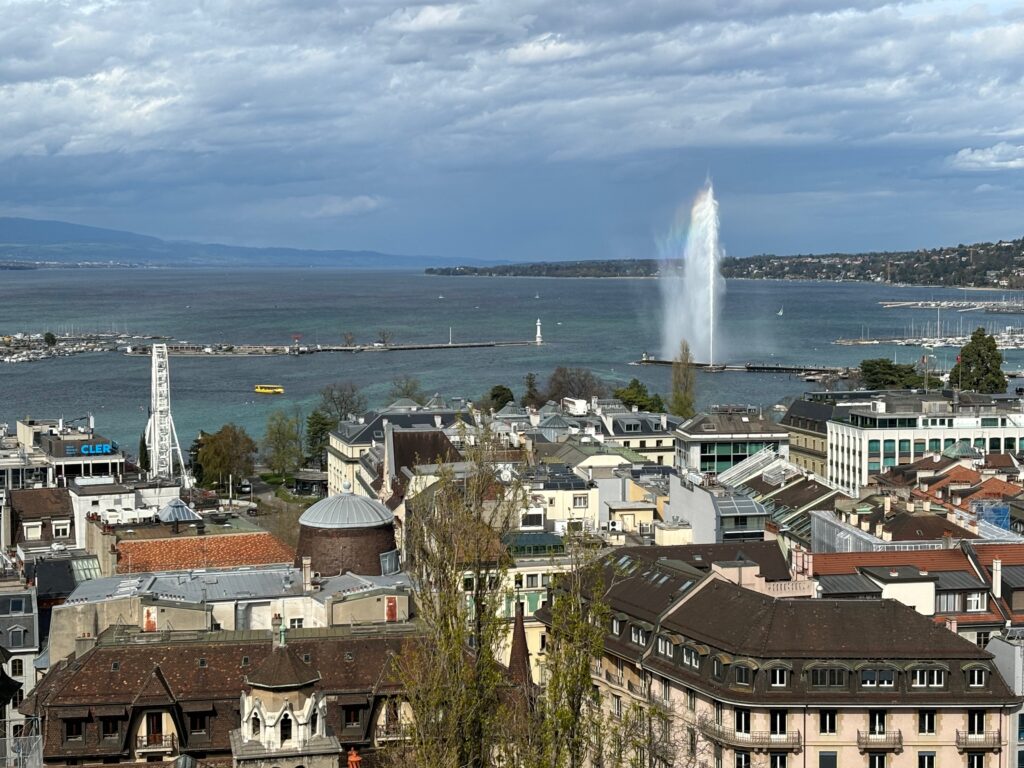
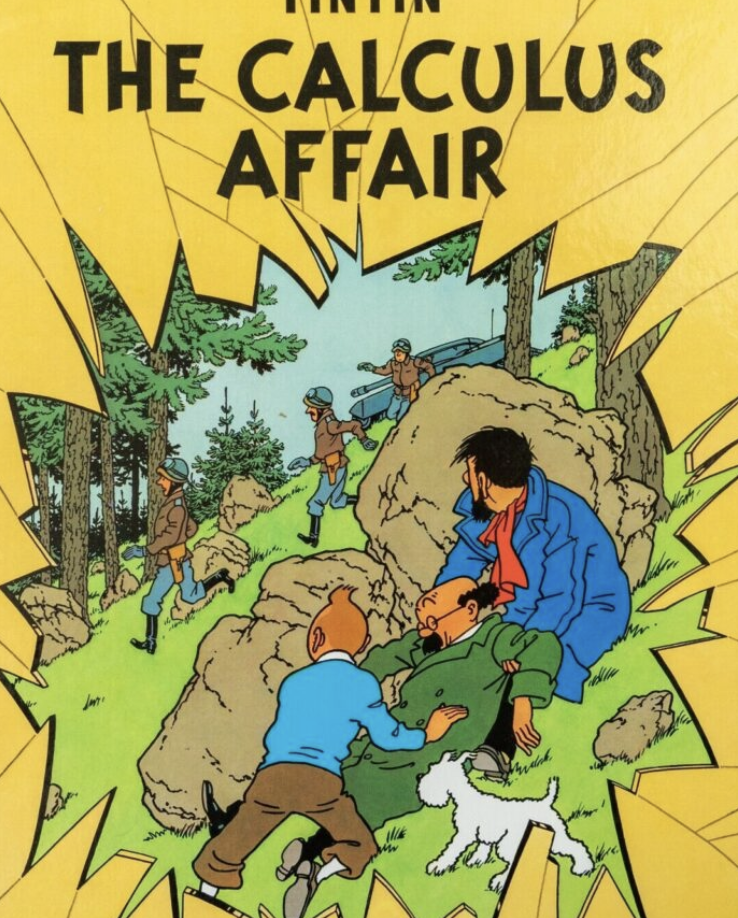
When I was a child, I was obsessed with the adventures of Tintin, a fictional reporter from Belgium who traveled to almost every continent (we never saw him make it to Australia). On his travels usually accompanied by his dog Snowy, solving crimes, spy-rings and flying to the Moon. The series author Herge was fanatical about real historical detail (after his first three terrible books).
In “The Calculus Affair,” Tintin dashes to Geneva to rescue his friend Proifessor Calculus who had traveled there for a science conference. In the book, Tintin flies there, misses his friend and is then engulfed Tintin in cold war intrigue, spy rings and sonic weapons. He even ends up almost drowning in Lake Geneva. Hergé’s detailed illustrations brought Geneva to life through this gripping and fun comic book. Long before I ever visited, I felt I knew key elements of the city, including the train station, Hotel Cornavin, Lake Geneva, the airport and surrounding Swiss landscape.
That early Tintin story set the tone for my own fascination with the city. People are very dismissive of this lakeside city, often describing it as dull, soulless, or just expensive. “Geneva has the sleepy tidiness of a man who combs his hair while yet in his pyjamas.” said US literary critic Lewis Mumford in 1975. I’m much more generous, and I love the place. I would easily rank Geneva at #32 in my personal listing of 265 cities. It is my second favourite Swiss city after Bern which I rate at #26. For me, Paris, Tokyo and Berlin top my lists.
City Layout and Geography
Geneva sits on the picturesque shores of Lake Geneva and is framed by incredible mountains embraced by the majestic Alps. Year round, it is visually a stunning place.
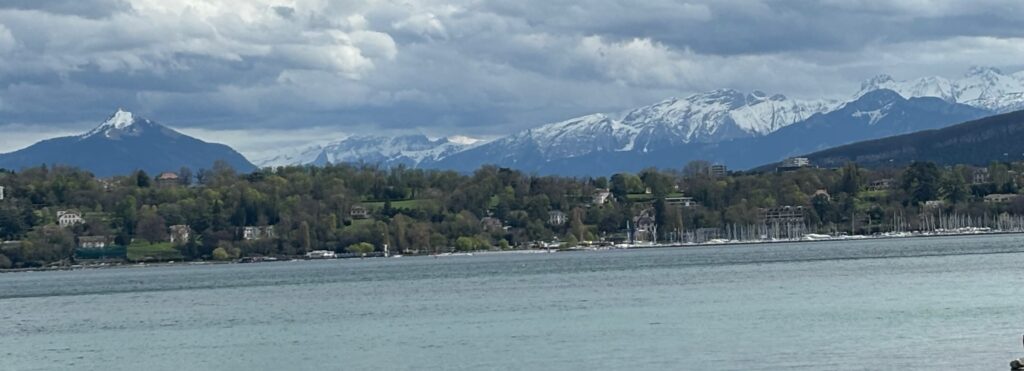
Today, the city covers approximately 16 square kilometres, about the same size as Manhattan’s Central Park! It has a population of around 206,000 people. The city proper is surrounded by a network of smaller but significant municipalities such as Meyrin, Thônex, and Vernier. Sometimes, it’s genuinely hard to see where the city stops and some of the settlements start.
At the city’s heart is Cornavin Railway Station, Geneva’s main transit hub, surrounded by hotels, restaurants, shops, and constant activity. Tintin’s friend Professor Calculus stayed at the Hotel Cornavin next to the station. Today, it has a display dedicated to him. Fans often come to stay at this hotel!.
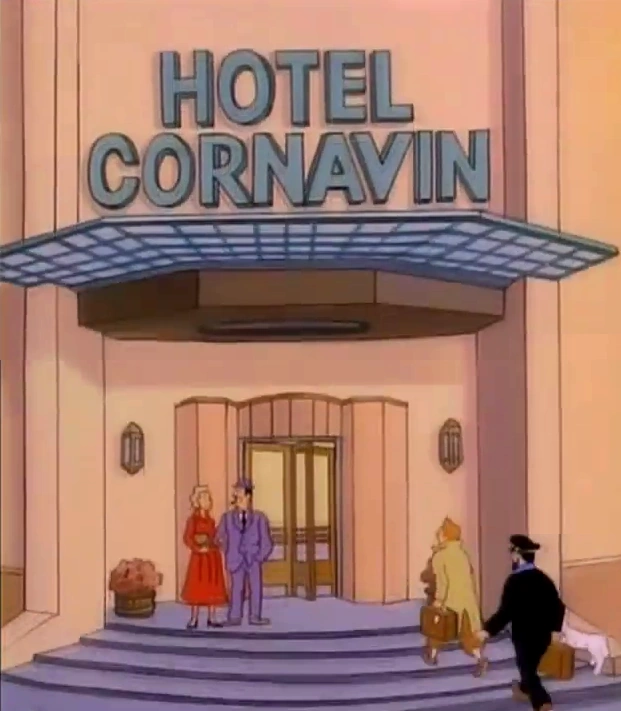
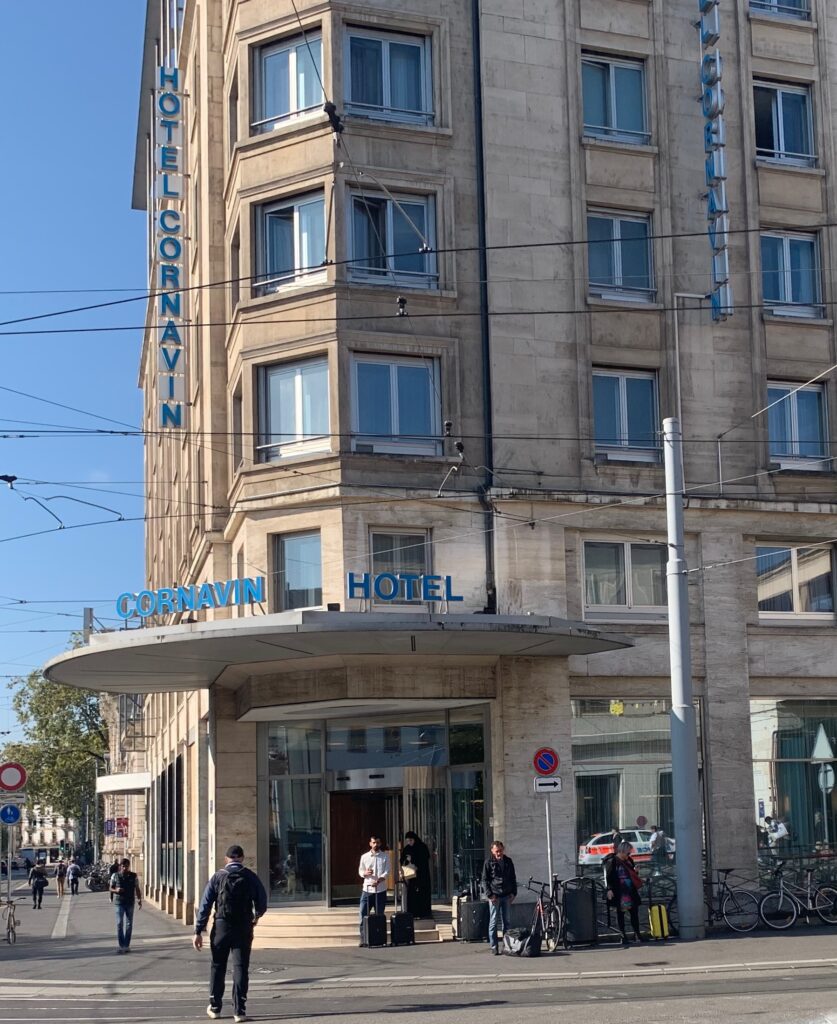
Bit of Real History
“Genava,” was a bustling Roman settlement established at the 1dset century located aon the banks of the Rhône River. It was smack bang at the centre of trade routes linking Italy, Gaul, and Germany.. This advantage would last for centuries.
A fascinating, and honestly terrifying, fact is that Geneva was devastated in 563 AD by a tsunami. Scientific studies, archaeological research, and historical accounts show that a massive landslide at the far eastern end of Lake Geneva triggered an underwater mudslide that unleashed a wave up to 13 meters (40 feet) high. Within 70 minutes, this tsunami crashed into the city walls, destroying bridges, mills, and killing many inhabitants, a sobering reminder that such rare disasters can and did strike even landlocked Switzerland.
For centuries, Geneva was controlled by bishops, followed by the Counts (and later Dukes) of Savoy, who regularly competed for dominance over the city. In the Middle Ages, Geneva developed a measure of self-rule but had to repeatedly fight off attempts by the Savoy dynasty to assert control. It formed forming defensive alliances with Swiss cantons (like Bern and Zurich), but it was not a full member of the Old Swiss Confederacy (Alte Eidgenossenschaft.) The city also had periods under nominal influence from the Holy Roman Empire, and later, brief annexation by revolutionary France before regaining independence and joining Switzerland in 1815 as its 22nd Canton (state).
Thanks to this combination of trade, ideas, and conflict, Geneva developed a unique tradition of diplomacy and humanitarian action, culminating in its role as the birthplace of the International Red Cross, the Geneva Conventions, and today as a major centre for many international organisations and peace negotiations. (and probably spies as Tintin found). Across Geneva, you’ll spot numerous diplomatic missions from over 180 countries.
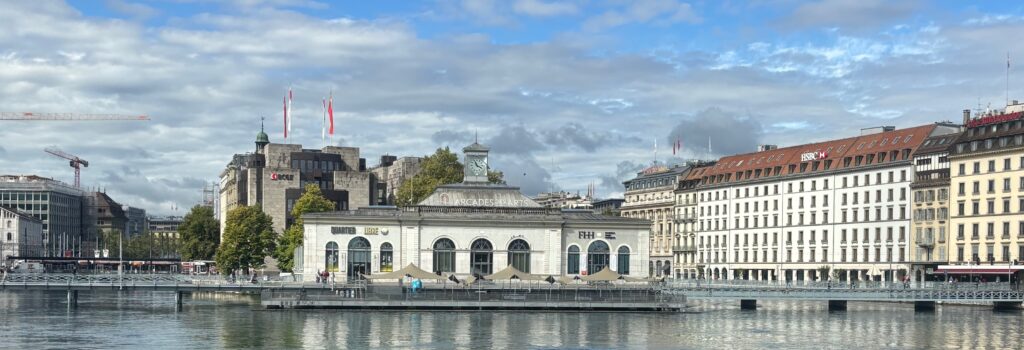
My Favourite Must Dos
- Go Lakeside: Heading east from Cornavin, a 12-minute stroll brings you to the stunning lakefront. I love to walk and run along the waterfront which stretches for about 5.7 km. Along the way you’ll pass the iconic Jet d’Eau fountain, the l’Horloge Fleurie (Flower Clock), Geneva’s Ferris wheel (La Grande Roue), lakeside swimming spots, and plenty of cafés. The Jet d’Eau originated from a technical problem: how to relase excess water pressure from the city’s water distribution system, which was driven by the Rhône River.
This open evacuation of water led to the development of the iconic fountain! On the far end of the lakeside promenade you’ll find the leafy former commune of Eaux-Vives, centered on a beautiful 19th-century lakeside park. It has a “beach” which is popular on summer weekends. Also, along the lake are neighborhoods such as vibrant Carouge (“Geneva’s Little Italy”) to the south, and Les Grottes (about 500 meters northwest), known for its quirky architecture and creative community.
Cruise along Lake Geneva in one of the public ferry services or on a scenic cruise. Its relaxing and beautiful.
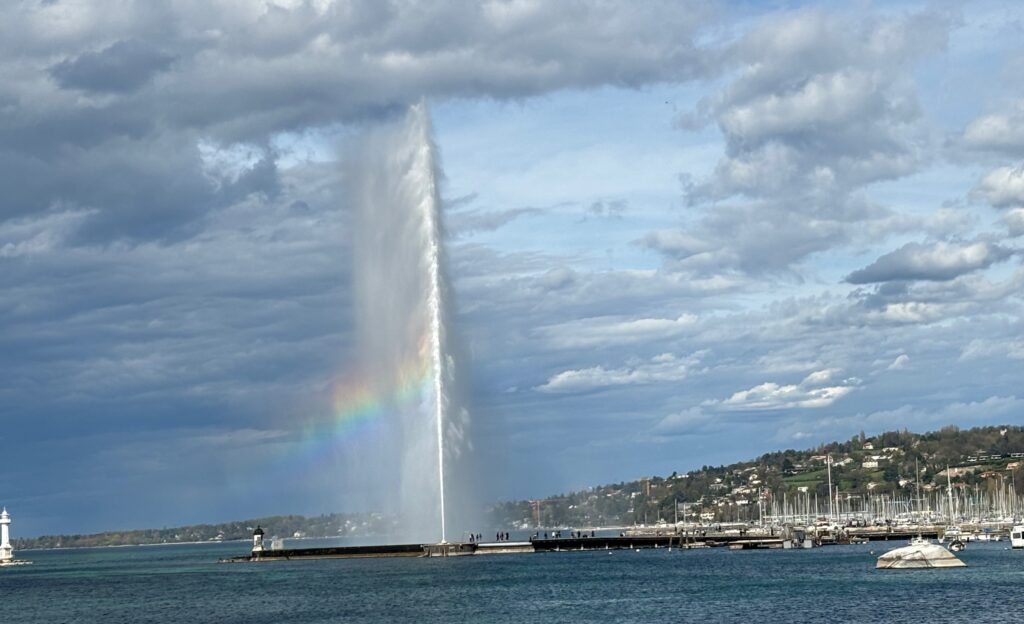
2. From the main entrance of Cornavin, walk directly south—just 830 meters (about 10–15 minutes)—to reach the historic Old Town, with its winding cobblestone alleys and picturesque squares. The Old Arsenal is worth looking at. It is a small but notable historical site, close to the Place du Bourg-de-Four and St. Pierre Cathedral, featuring a set of five historic bronze cannons displayed under an arched arcade, plus a large and colorful mosaic mural that depicts Geneva’s entry into the Swiss Confederation.
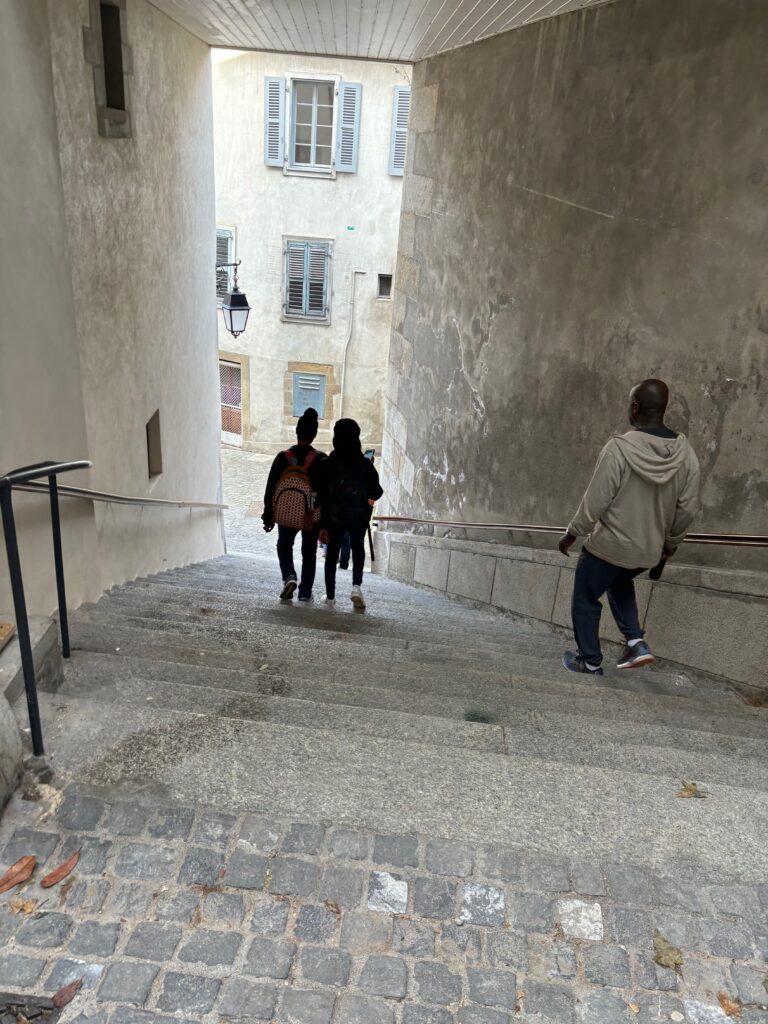
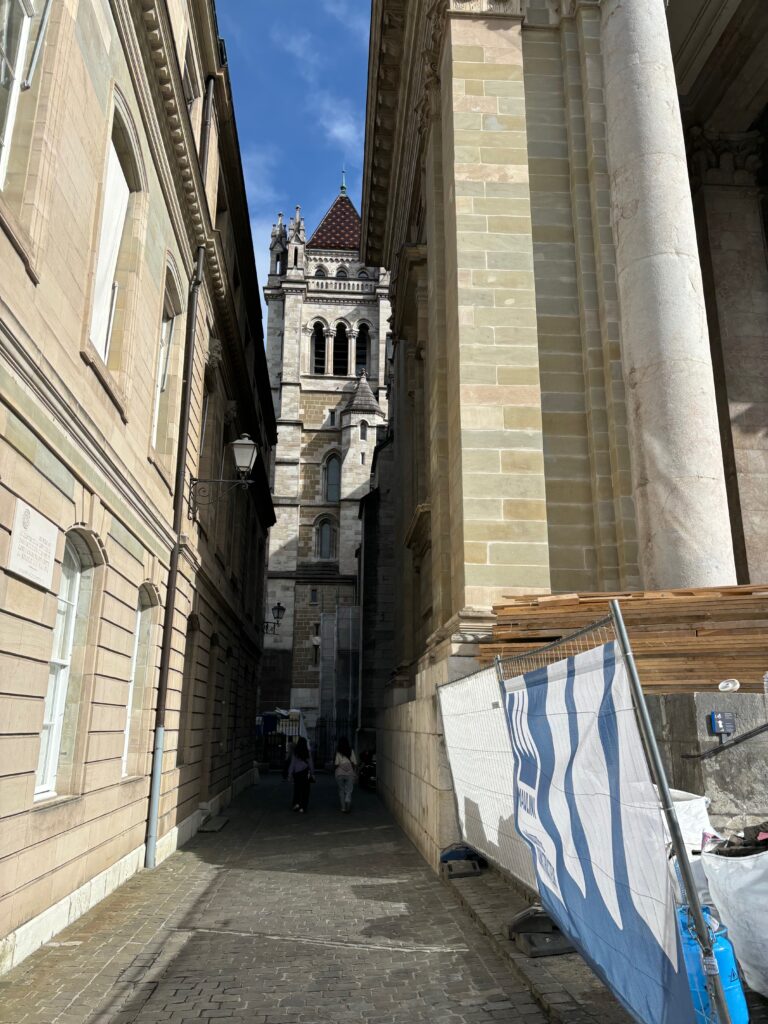
3. A visit to the Palais des Nations, the European headquarters of the United Nations, is a must. The United Nations and Red Cross headquarters (in the “Nations” district) are located 2 km northeast of the station, up the broad Avenue de la Paix. You can walk along the Avenue of Flags, displaying the national flags of all 193 UN member states plus the United Nations flag itself—a powerful symbol of international unity. Check out Geneva’s “Broken Chair” sculpture outside the UN.
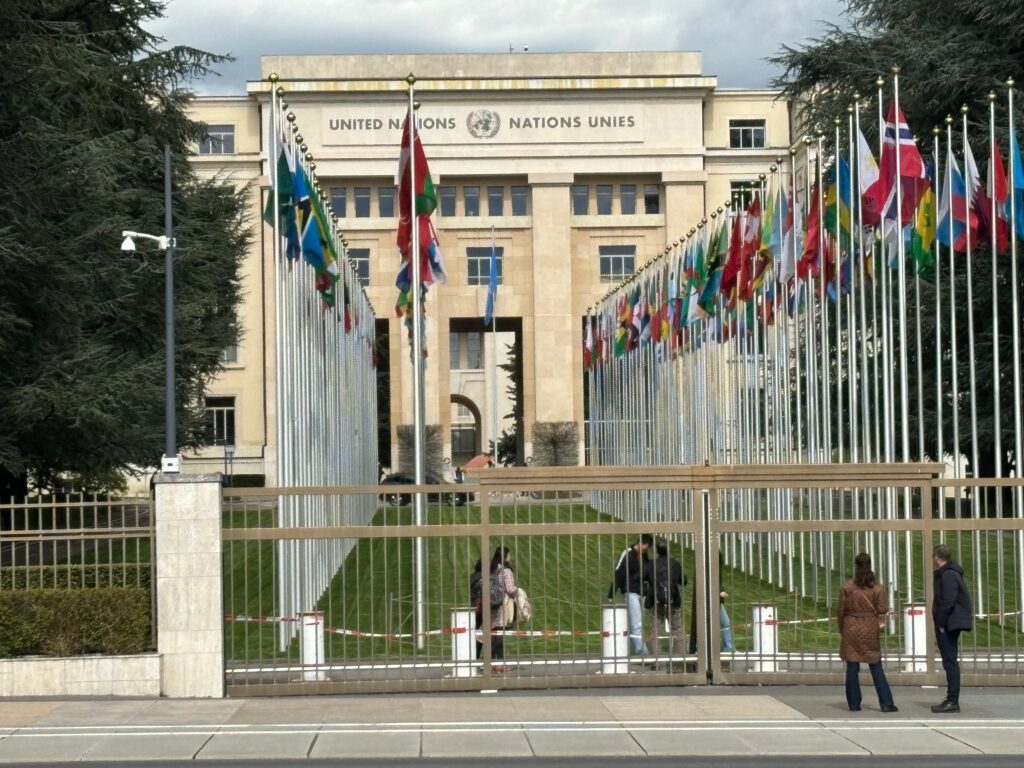
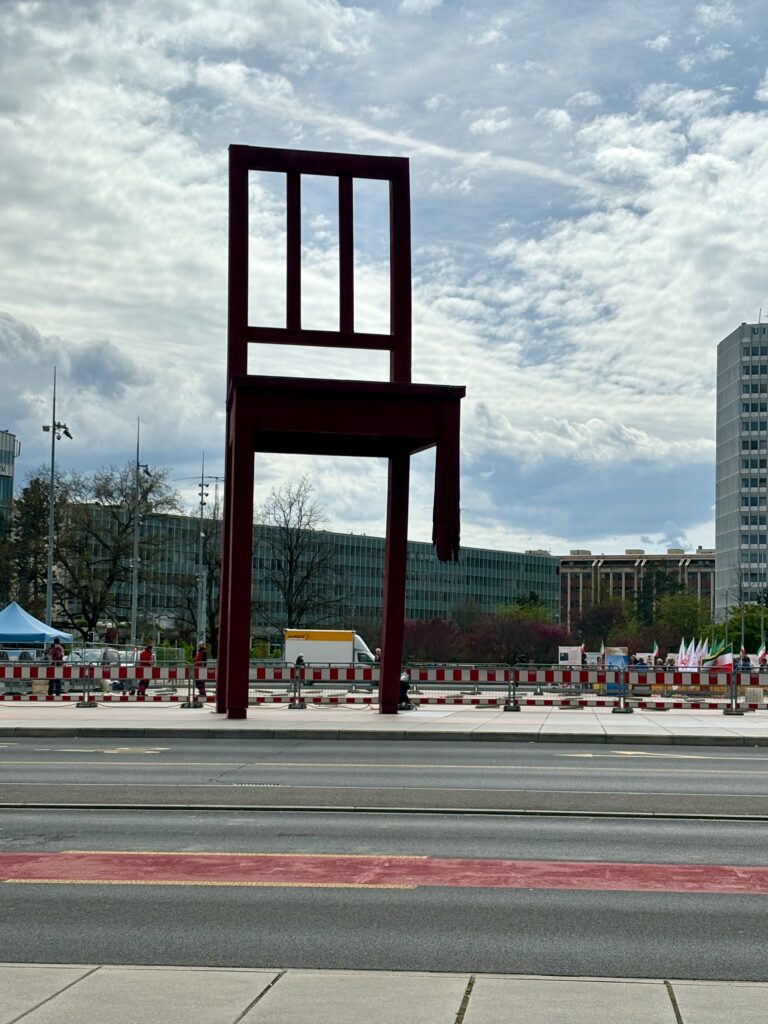
Guided tours take you through impressive rooms like the grand Assembly Hall, the Human Rights and Alliance of Civilisations Room with its dazzling ceiling, and the Council Chamber decorated with historic international artwork.
4. I really enjoy the climb up the 157 steps of St. Pierre Cathedral for the physical challenge and the sweeping panoramic views over Geneva’s rooftops, lake, and mountains. This Neoclassical Cathedral, dates back to the 12th century but,was constructed on much older layers, including a 4th-century basilica and history from Roman and pre-Christian eras. The remarkable archaeological site beneath the cathedral well worth a visit. The building itself is quite interesting and as it was home church of John Calvin from 1541, his personal wooden chair is on display inside.
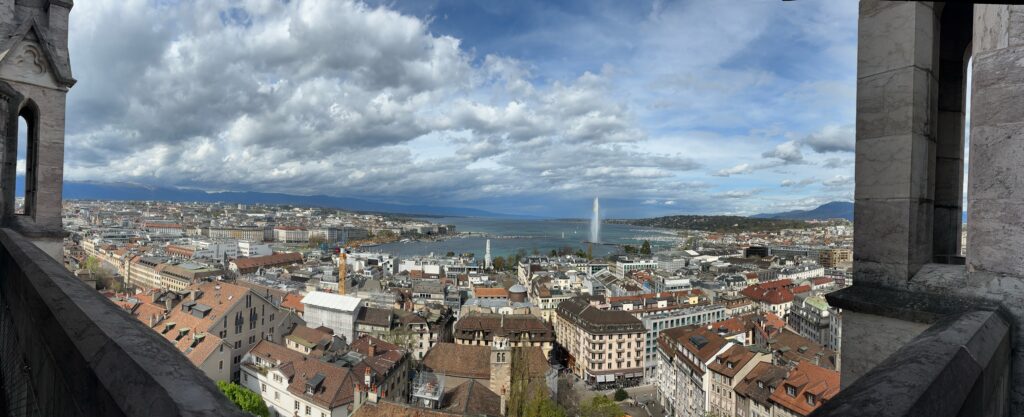
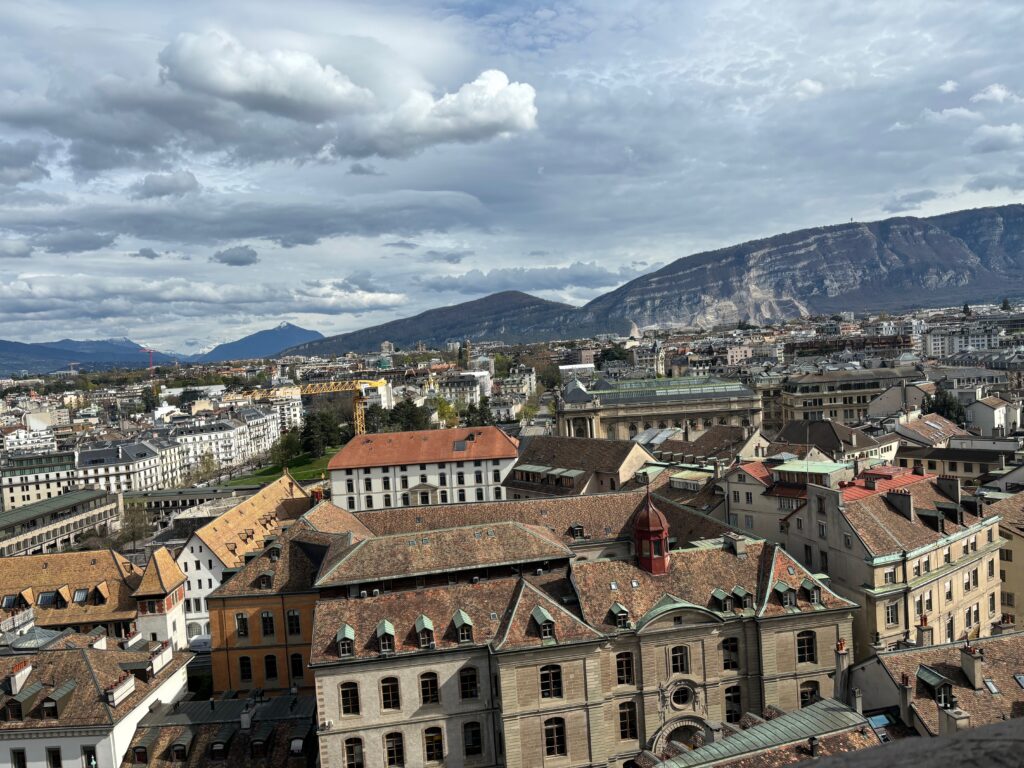
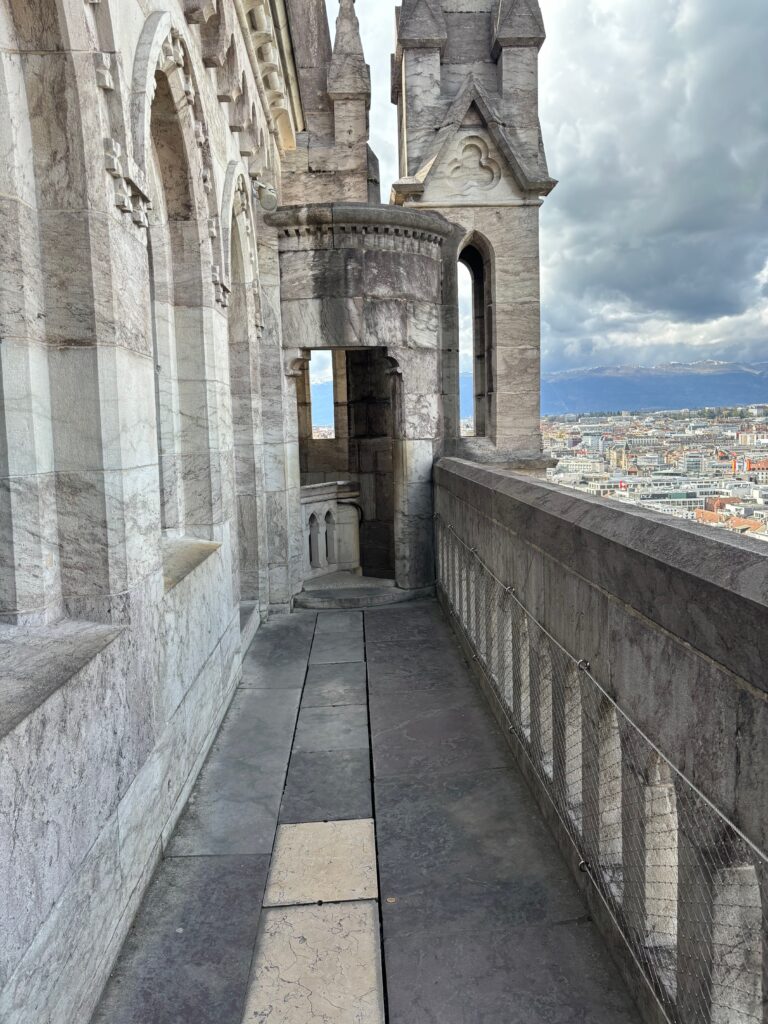
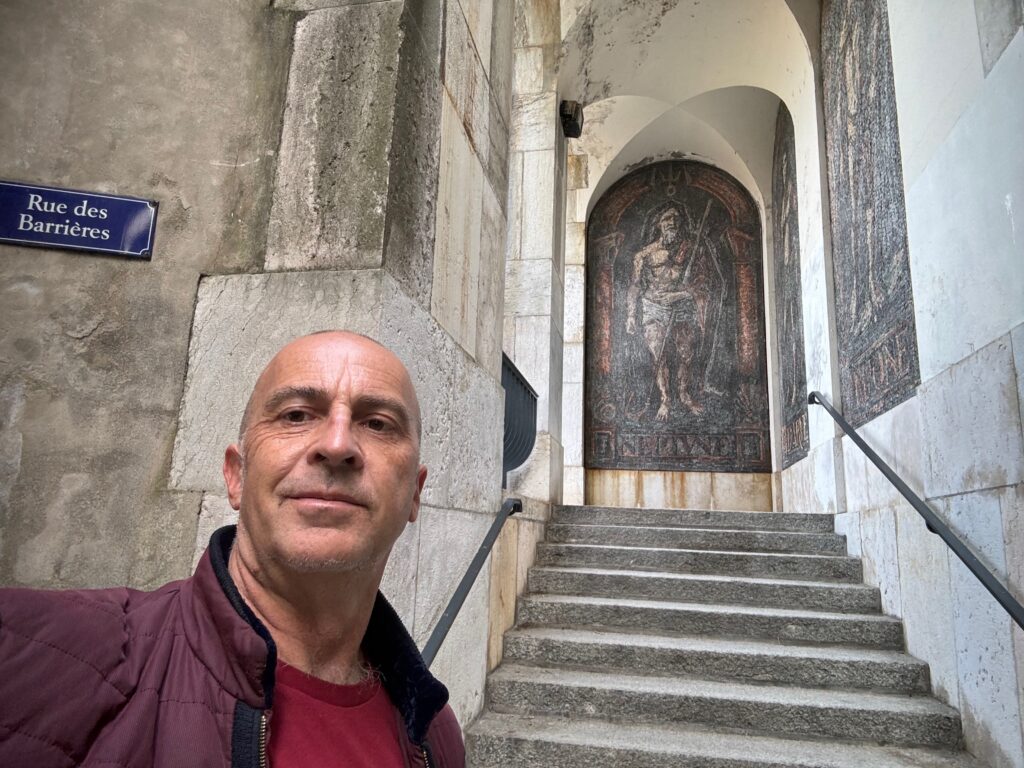
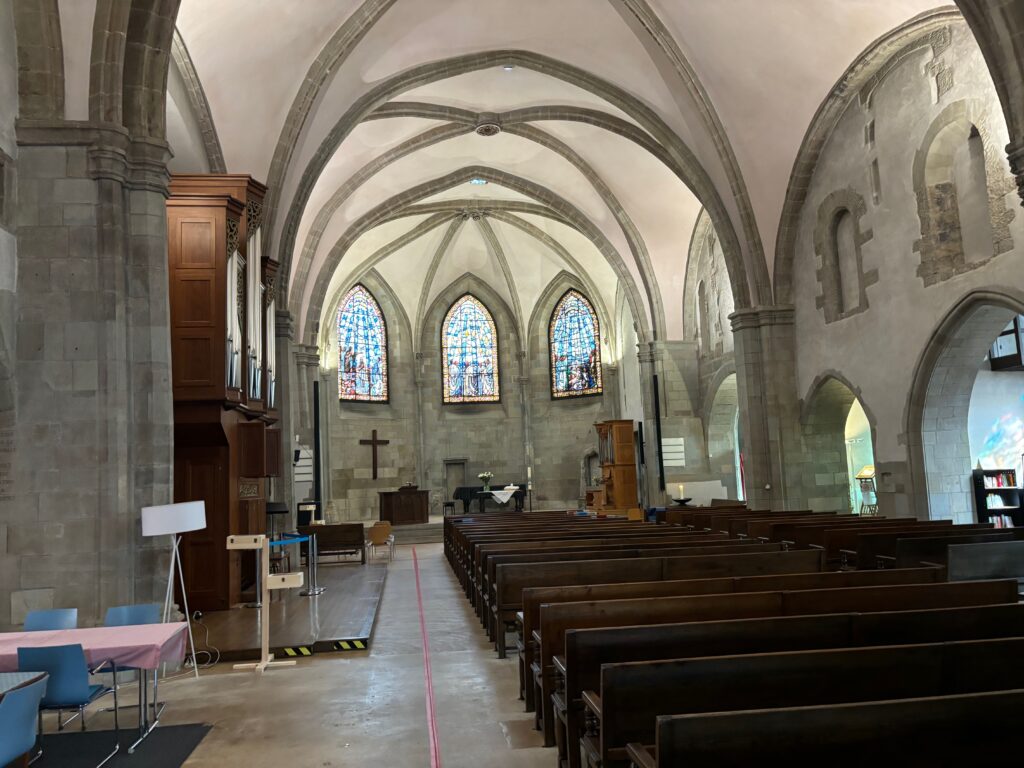
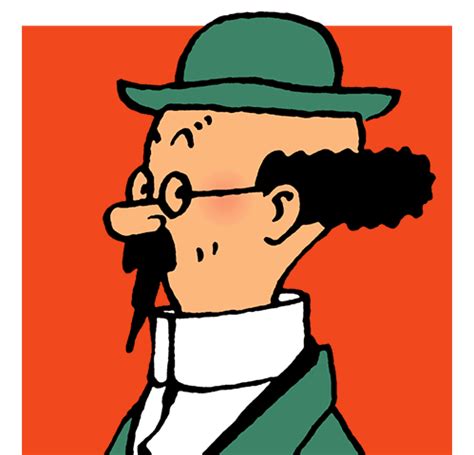
5. CERN Science Gateway: Tintin’s Professor Calculus would fully approve of CERN (European Organization for Nuclear Research)
It has excellent free hands on exhibitions on physics, the universe, and the birthplace of the World Wide Web.
Unfortunately, you cannot see the giant hadron collider itself (the LHC)—it’s buried 120 metres underground and not open to direct public visits. I wonder if Tintin would have found a way?
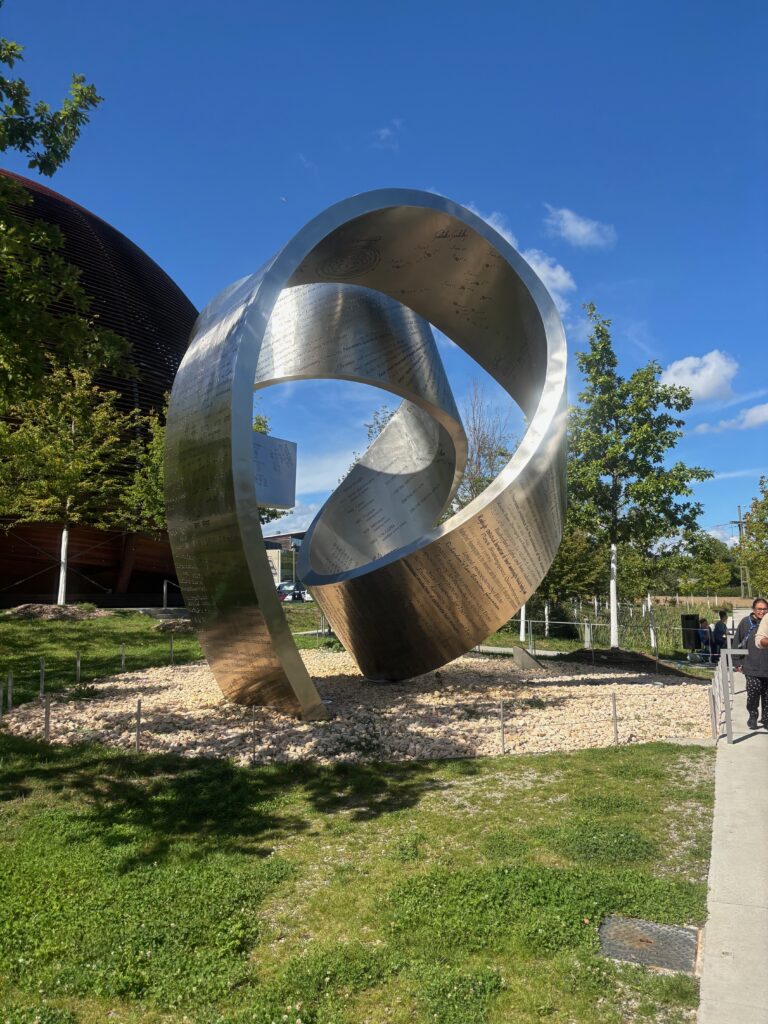
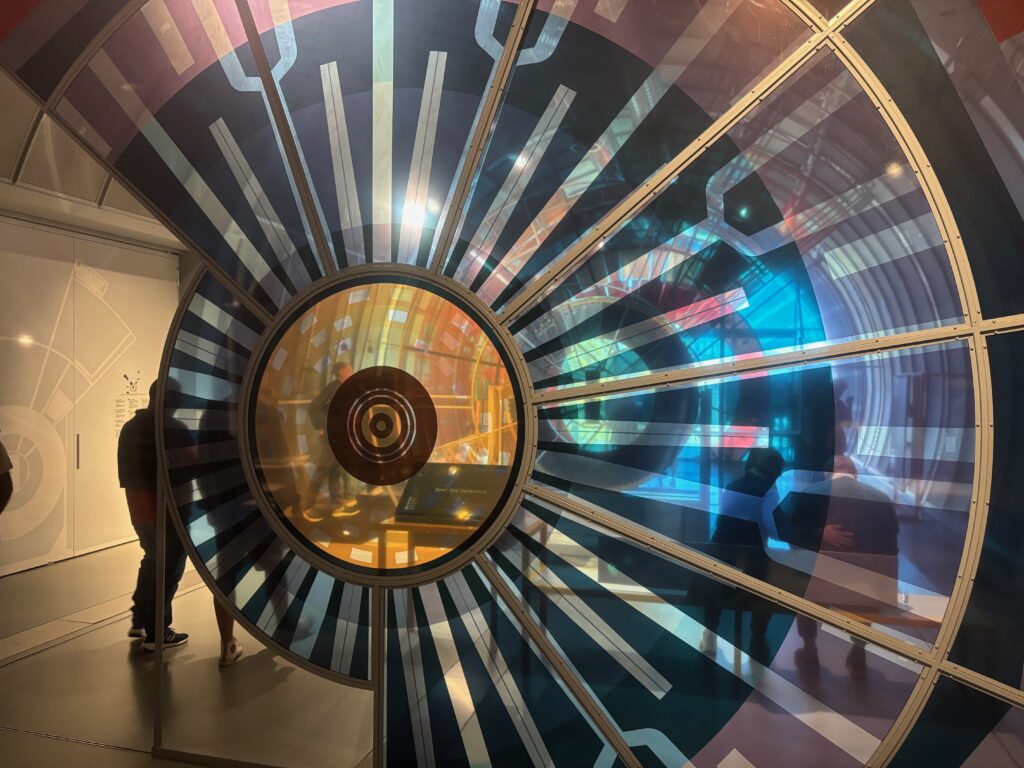
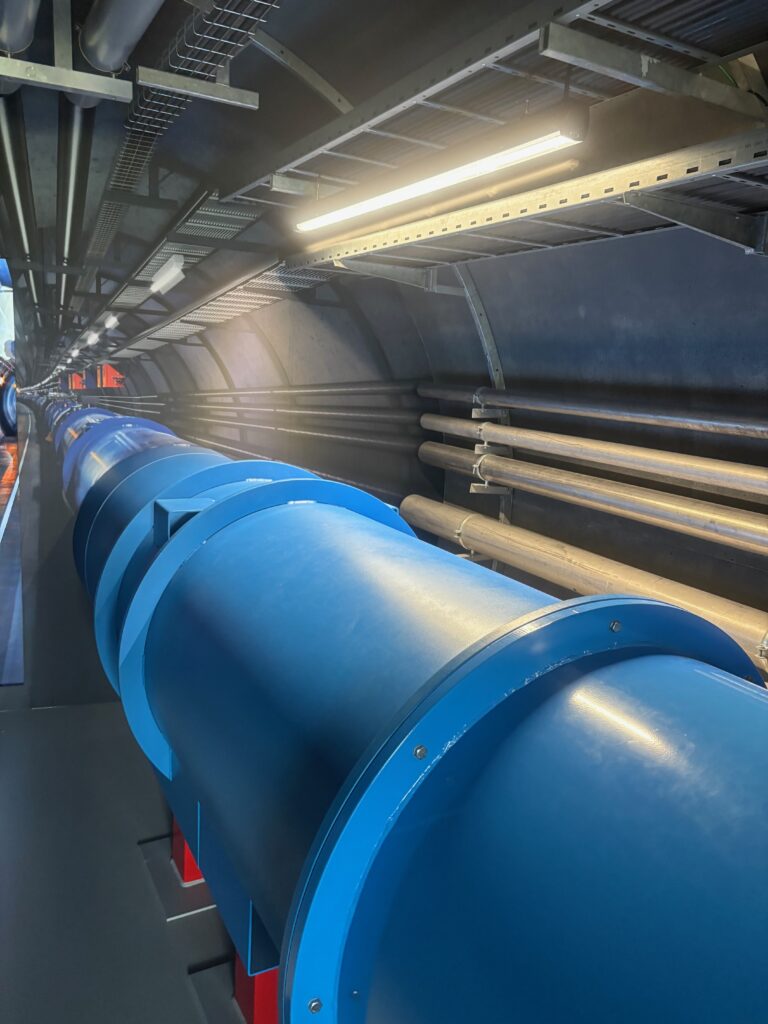
6. Geneva’s Botanical Garden, (officially called the Conservatory and Botanical Garden of the City of Geneva) is a spellbinding park which contains around 14,000 plant species from all over the world and a vast herbarium with roughly six million preserved specimens. Its, sits on the western lakeshore just across the railway tracks from the United Nations Office. You’ll find ornate flowerbeds, tranquil ponds, an arboretum, and the graceful metal-and-glass Winter Garden greenhouse, which houses exotic and tropical plants and makes a beautiful stop year-round.
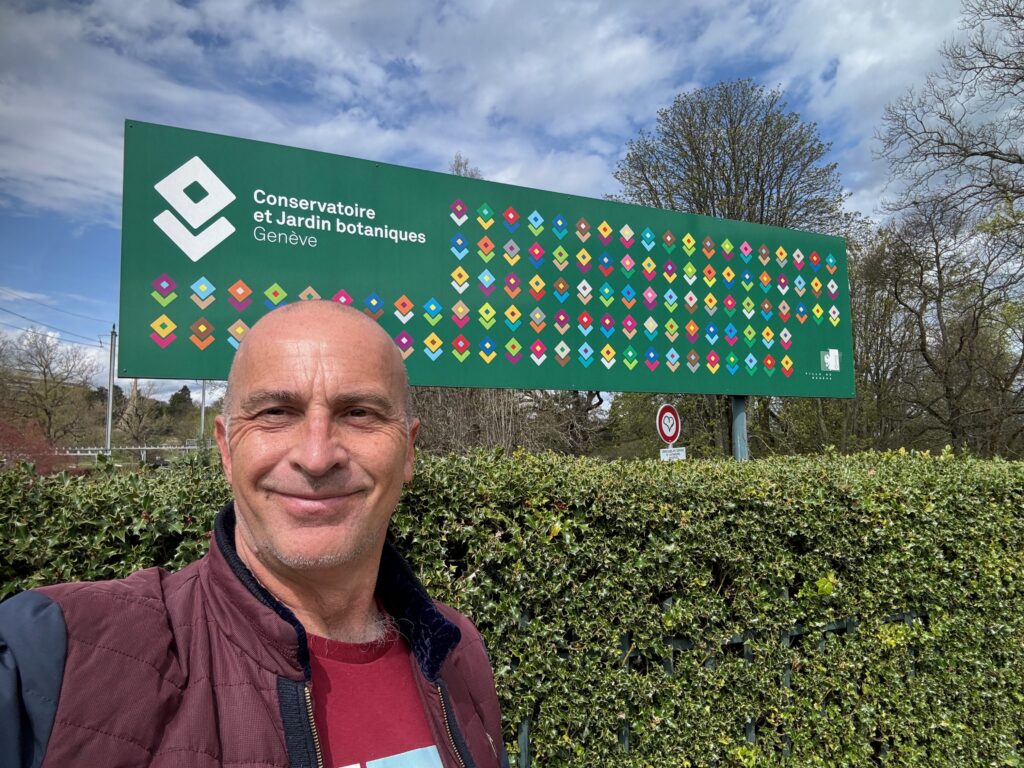
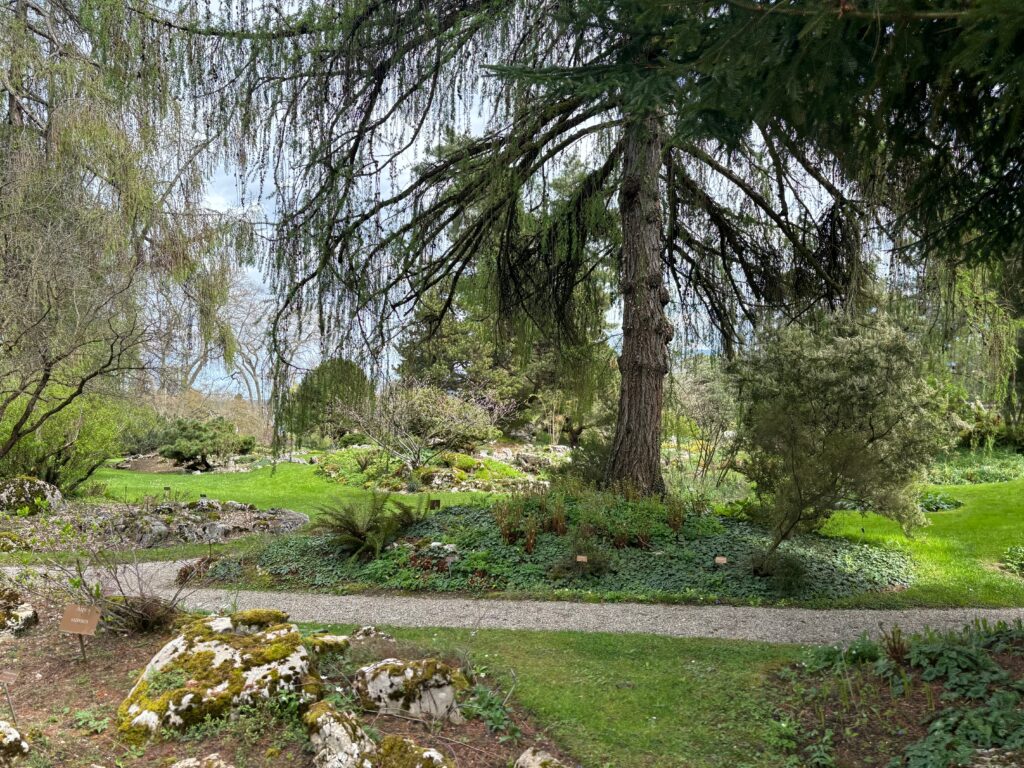
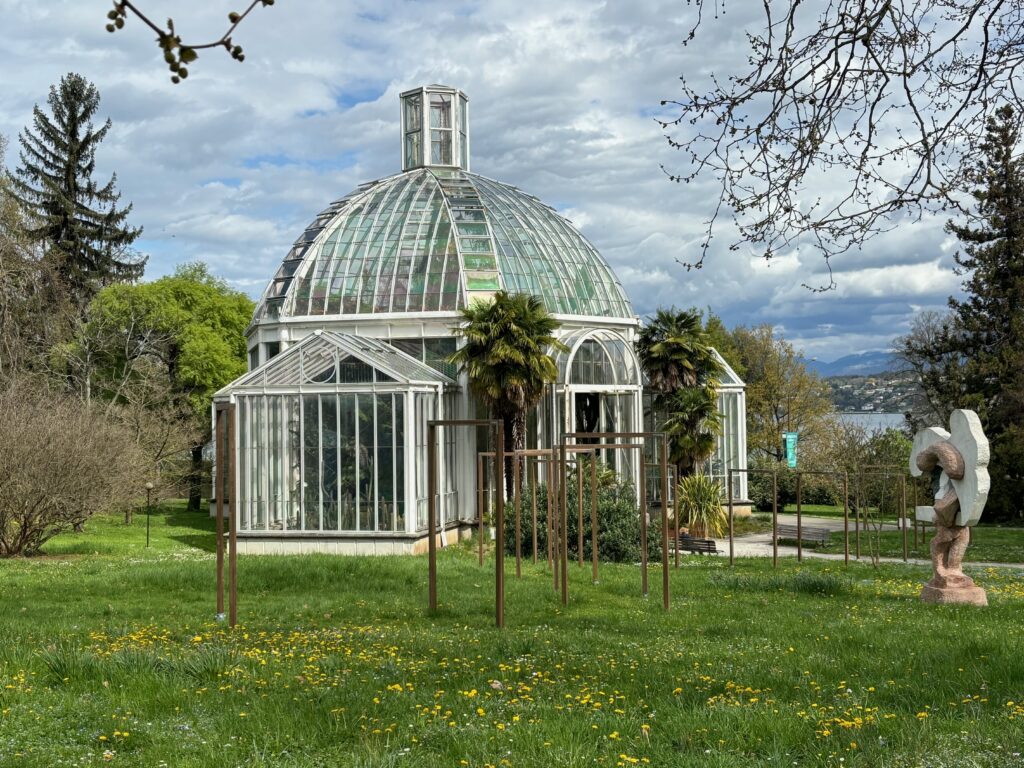
7. Carouge, just south of the city center, is Geneva’s “Mediterranean village”—famous for its Sardinian-inspired architecture, relaxed vibe, creative scene, and lively nightlife. Here’s what stands out about it
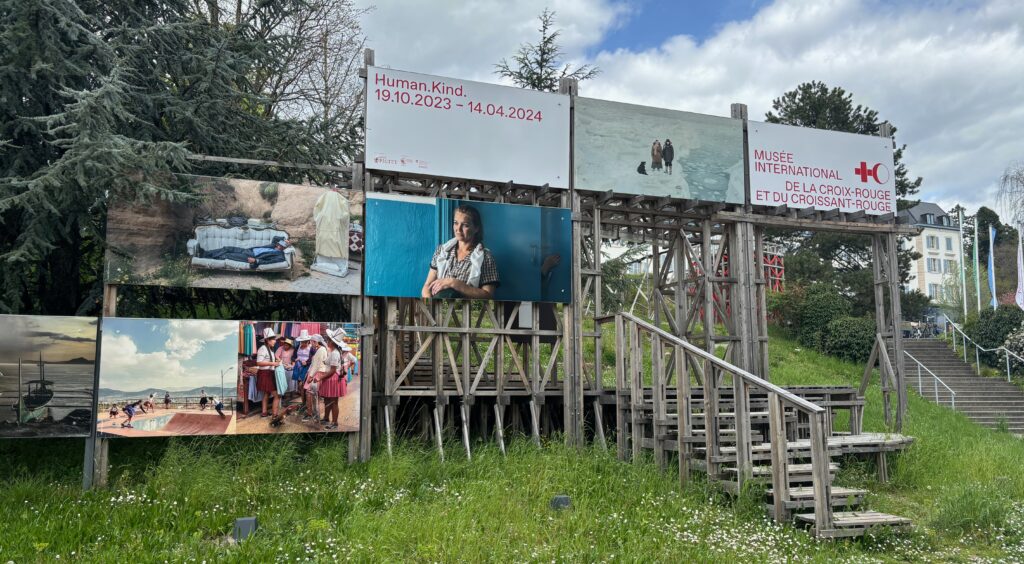
8. Visit one or more of the major Museums including:
- The Red Cross Museum, where the stories of humanitarianism come to life in thought-provoking exhibitions.
- Musée d’Art et d’Histoire – Geneva’s leading fine arts, archaeology, and history museum.
- International Museum of the Reformation which explains how Geneva played a crucial role in the Protestant Reformation. A subject I knew little about yet it had a profound impact on the wordl economically, politically and socially.
- MEG–Musée d’Ethnographie de Genève – World-renowned ethnographic museum with bold exhibitions.
- Maison Tavel– The oldest house in Geneva, now a museum about the city’s urban history
- Patek Philippe museum of Genevese, Swiss and European horological art, enamels, musical automata, and portrait miniatures dating from the 16th until the 19th century plus 2000 watches!
9. Geneva Markets: Plainpalais flea market, Carouge markets, and village street food stalls for local colour and window shopping. You could of course buy a Swiss watch or open a private Swiss Bank account!
10. The Reformation Wall is a striking monument built into the city walls at Parc des Bastions. It includes towering statues of figures like John Calvin, John Knox, William Farel, and Theodore Beza, as well as reliefs and inscriptions marking the key moments and people of the Protestant Reformation. The Geneva motto “Post Tenebras Lux” (“After darkness, light”) is engraved prominently, symbolizing the city’s central role in this pivotal historical movement.11.
Further Afield
- Hike or take the cable car up Mont Salève—often called the “balcony of Geneva”—which rises to about 1,400 metres just across the French border. The cable car whisk you up to 1,100 metres in under five minutes, where you’ll find loevkt terrace cafés and constant knockout views over Geneva, Lake Geneva, and Mont Blanc on clear days. From the summit, hiking trails lead through alpine meadows with coiebelel qrsinbg cattle
- It’s not hard to get to the Mer de Glace, the largest glacier in France, from Geneva. Take a train to Chamonix via Annemasse or St-Gervais, then walk over to Chamonix’s main station. From there, hop on the historic Montenvers-Mer de Glace red cogwheel train, which winds up the mountain to 1,913 meters in about 20 minutes, delivering breathtaking views over the glacier and the dramatic alpine scenery
Food
With an emphasis on quality ingredients and culinary innovation, Geneva offers a terrific food choice journey. I had the best fondue of my life here in Geneva, for example. I have also had superb take away kebabs! Other traditional Swiss specialties such as raclette and chocolates are also available and of excellent quality. What is even more interesting is the incredible diversity of food in the city, reflecting the range of diplomats and international residents. Ethiopian, Turkish, Greek, Italian, Vietnamese, and Thai restaurants serve an incredible variety of delicious dishes. Just east of the station (a quick walk), you reach the Pâquis neighborhood, famous for its nightlife, cosmopolitan atmosphere, and multicultural restaurants. Rue du Rhône is the luxury dining area with Michelin-starred restaurants!
The main drawback for travelers is the prices, which can be quite high.
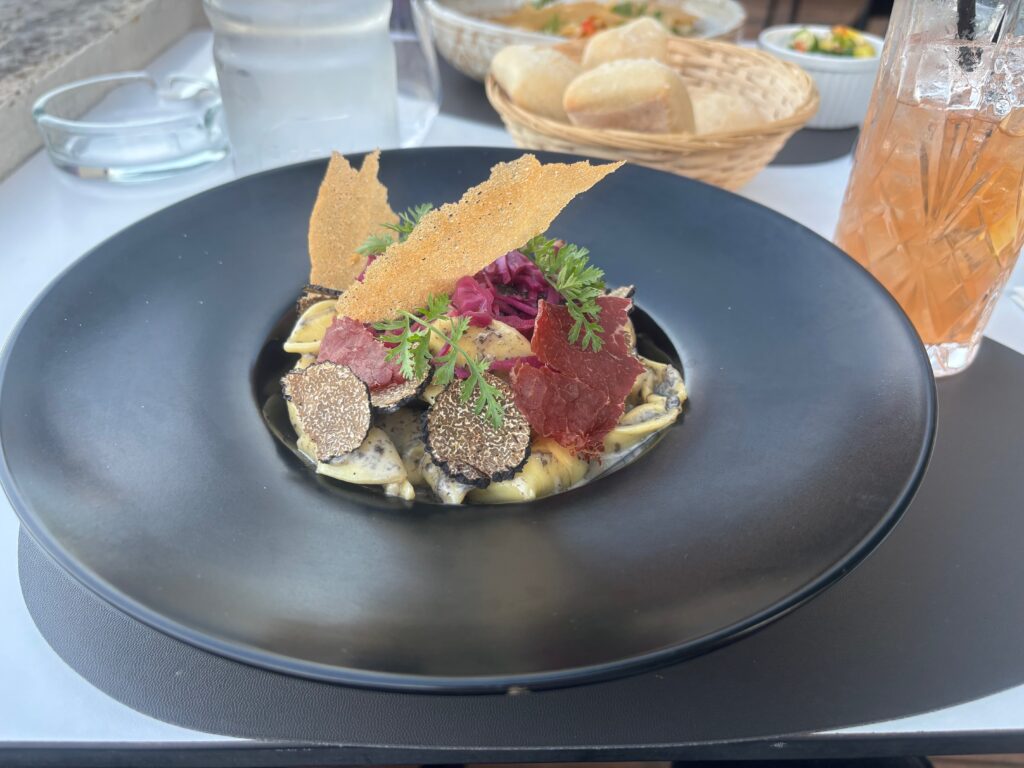
If Breakfast is not included in my hotel stay, I enjoy breakfast like many locals do, at one of the numerous local cafes. Alternatively, I sometimes stock up at a local bakery or grab yogurt, fruit, and baked goods at Migros or Co-op supermarkets. For longer stays, I have taken the bus just across the border into neighboring France to buy supplies at much cheaper prices in French supermarkets, which is a popular strategy among locals to save money.
Geneva’s sweet side can be explored by visiting legendary chocolatiers. There are many popular chocolate tours and the city even offers a Choco tasting Pass! If you want to stock up on regular Swiss chocolate bars, I recommend hopping across to France. The price of Lindt at the Carrefour supermarket behind the airport in France is usually half the price of the same bars in Geneva supermarkets!
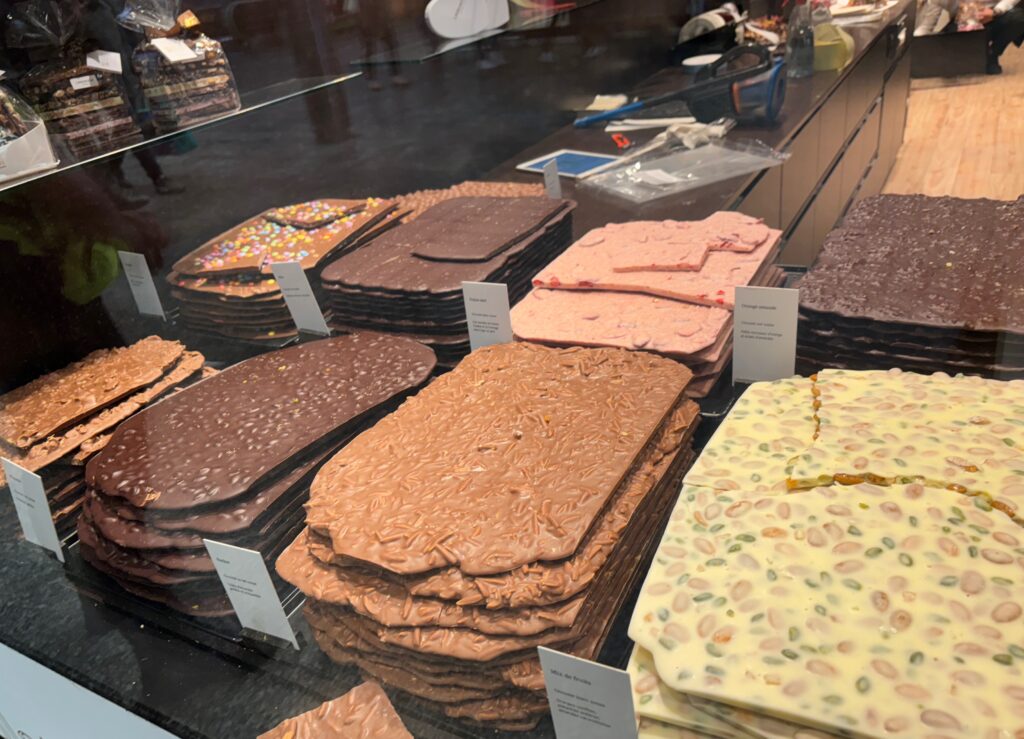
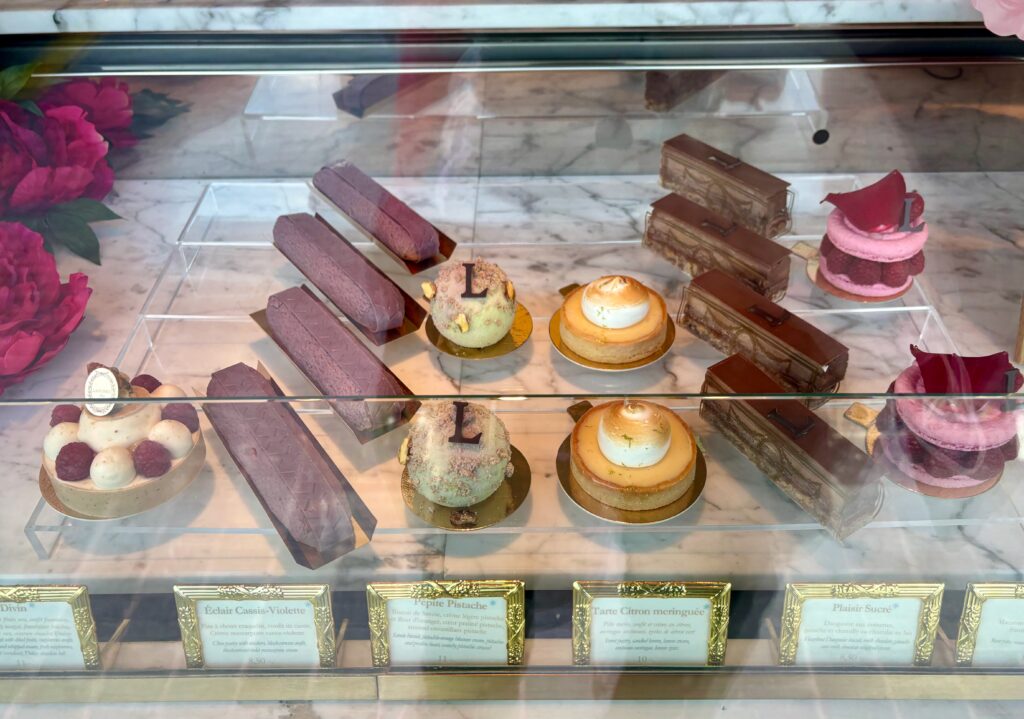
Getting There
In the book the “Calculus Affair“, Tintin traveled to Geneva by plane in “The Calculus Affair.” He flew into Geneva’s Cointrin Airport on a Sabena airline flight. The airport terminal and the plane were carefully portrayed to ensure accuracy.to ensure accuracy.
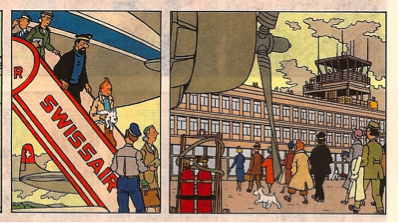
Geneva’s airport (second largest in Switzerland) is just 4 km northwest of the city centre, fully connected by direct train, bus, and trolleybus. The planes flying overhead are a constant reminder of the city’s global connections as you can fly to 146 destinations with 57 airlines.
Tintin and his partner in adventures, Captain Haddock, could also have taken the train from Brussels to Geneva Cornavin via Paris. Geneva has multiple daily direct trains bringing you into the heart of the city from Paris in three hours. The TGV also stops at Lyon 1h hour 45 minutes from Geneva. There are also services to Marseille (3.5h). The TGV Lyria high-speed services are a partnership between French Railways (SNCF) and SBB (Swiss Federal Railways). Regional TER and LÉMAN Express trains operated by SNCF also link Geneva with many smaller French towns across the border, such as Annemasse, Evian, and Annecy. Trains from Geneva to Milan are operated by both Trenitalia (the Italian national railway company) and SBB , usually as joint EuroCity (EC) services. SBB runs direct services to Lausanne (30 min), Bern (1h45), and Zurich (2h45).
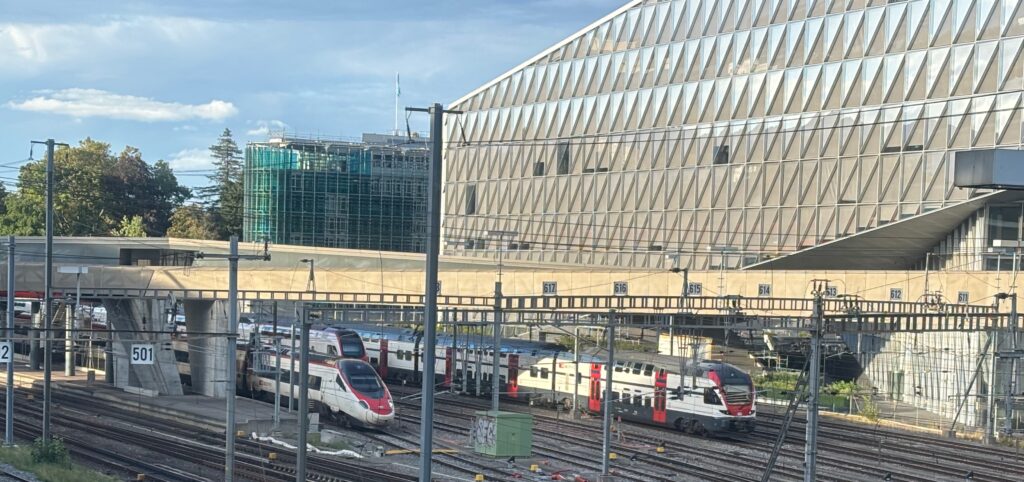
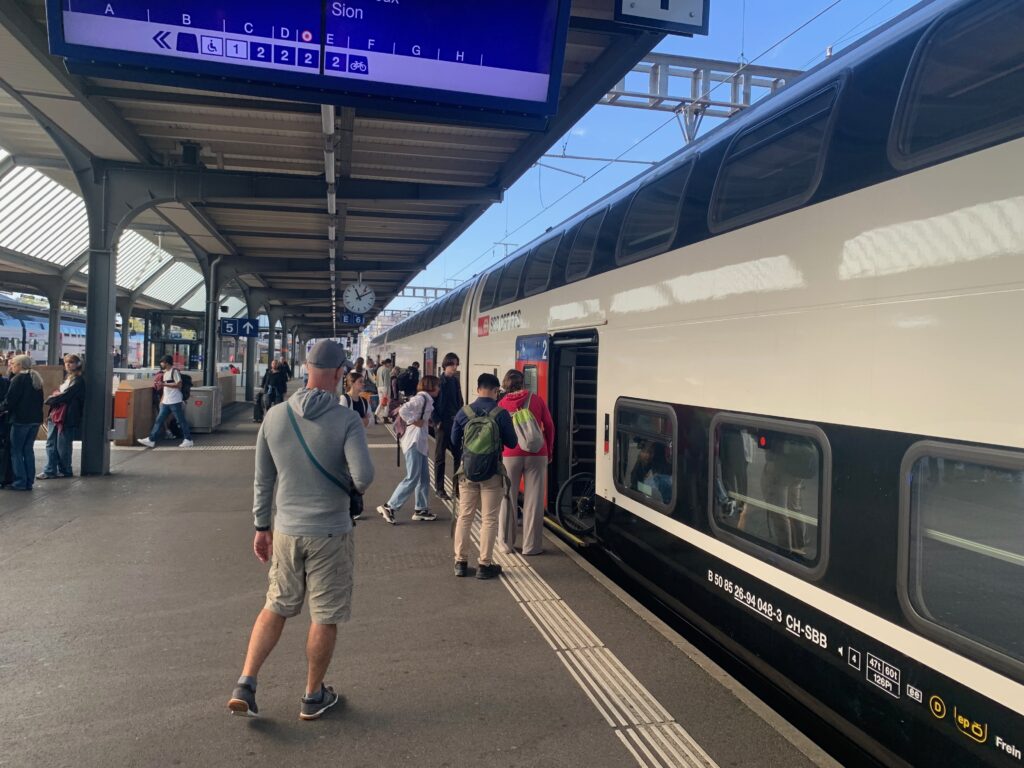
Geneva is in the Schengen zone which means travelling to and from most European destinations does not require immigration checks.
Getting Around
Tintin, along with Captain Haddock, stayed at Hotel Cornavin and then travelled around the Geneva region by taxi and other local transport during the story. I used the modern efficient and comforytbake TPG public transport network which has buses, trams, trains across the city and the Mouettes shuttle boats across the lake.
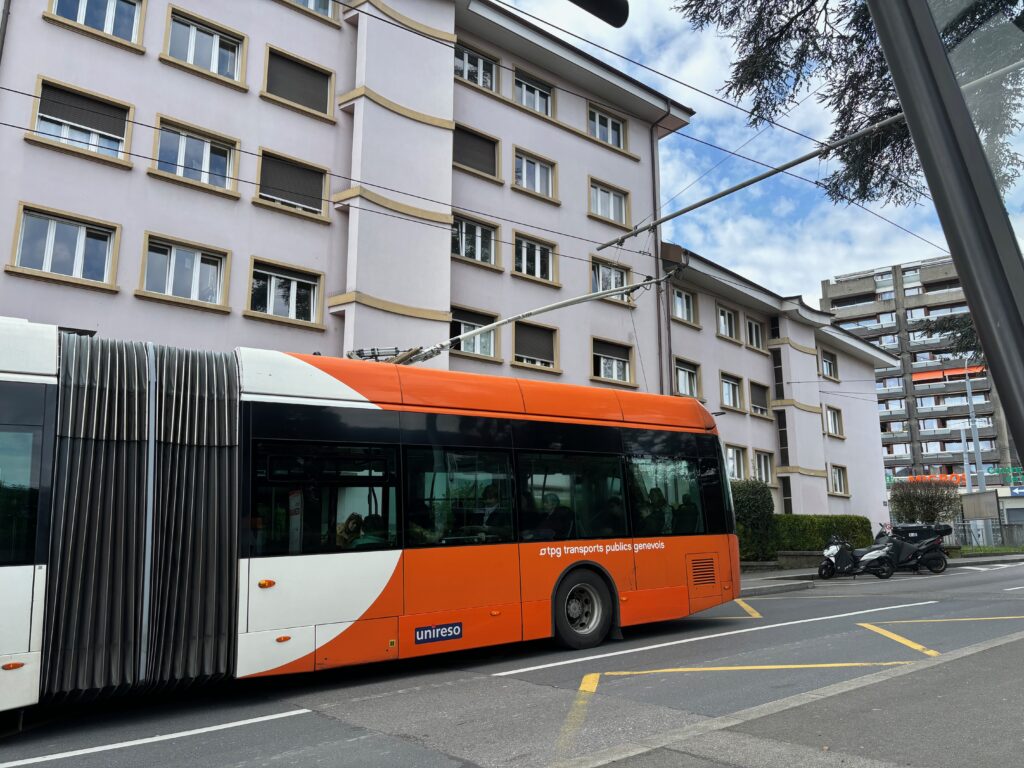
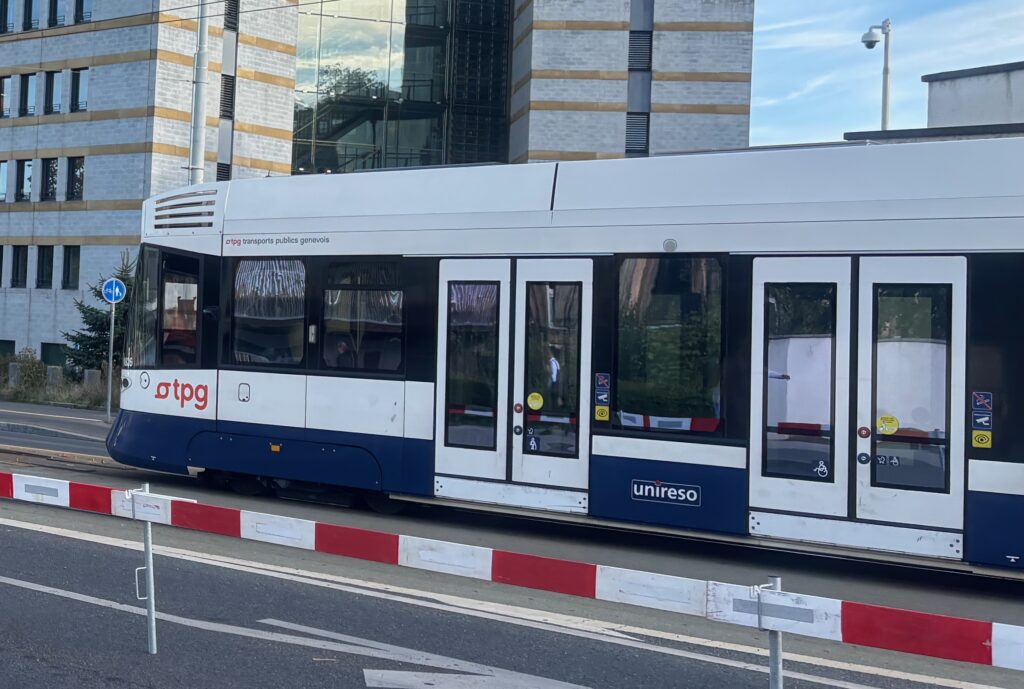
A valid Geneva Transport Card can be bought online or at machines across the city. Most hotel bookings include a free transport card for the duration of your stay. Bike and e-scooter rentals are a very popular option for shorter distances. You can also use taxis and Uber. I often walk in Geneva because its so compact.
Safety and Security in Geneva
Geneva is considered very safe for travelers, even at night, but it’s still smart to use common sense and take standard precautions. The main risk is petty theft, usually in busy places like Cornavin train station, trams, and crowded tourist sites. There are secure luggage lockers at Cornavin station but be aware that sometimes in the summer, people are often watching for “soft targets”. Always keep valuables close (not in back pockets or open bags) and remain alert in crowds. Watch your mobile phone to avoid it being snatched.
At night, areas around Cornavin station, Paquis, and Plainpalais can feel a bit rough. Expect more noise, and sometimes groups hanging around. These places are not highly dangerous but can attract pickpockets and rowdy crowds.
Emergency numbers: Police 117, Ambulance 144, Fire 118
Currency and Costs:
Bluntly, Geneva is known for being expensive. The rise in the value of Switzerland’s official currency, the Swiss Franc (CHF) has compounded this. A three-course meal for 2 in a mid-range restaurant is around CHF 120 ($USD151) for two people.A McDonald’s Happy Meal (McMeal/combo): CHF 18 ($USD22). Coffee is aound CHF6 at a cafe, approximately $USD7.
Geneva accommodation options often book out and if there is a major UN event or international conference and prices will climb. The Average Hotel Price in 2025 for 3-star hotel: Around CHF 125 ($157 USD) per night. 4-star hotel: Around CHF 170 ($214 USD) per night. 5-star hotel: Around CHF 350 ($440 USD) per night. Many find staying across the border in France in an AirBnB or hotel can be much cheaper, which I have done. Conversely booking when there are no major UN events on can mean cheaper accommodations!
A Men’s standard haircut: CHF 45 on average and Woman’s haircut: Typically CHF 60–70 or more, basic trims may be at the lower end for simple services.
Average museum entry: CHF 10–20, although some are free and some have a free or reduced entry day.
An all day travel pass is CHF10- note my comment about getting one for free from your hotel.
Business and Shopping Hours
Shops outside the airport and train station are closed on Sundays and public holidays. You will find most families on Sundays in Spring, summer and autumn enjoying the outdoors. Shopping and restaurant hours do not generally extend as late at night, as other international cities. Most museums and attractions are closed at least one day a week. Research and plan ahead.
In Conclusion
“Of all the cities in the world, of all the intimate motherlands a man hopes to encounter in the course of his voyages, Geneva seems to me the most propitious for happiness”. Argentine author Jorge Luis Borges wrote this in his 1984 travelogue and I personally sense that spirit of happiness every time I visit. Geneva needs at least two days for a proper explore. There is plenty to do that will soak up more time but avoid the comment by two backpackers on my train who said to me “we did Geneva in two hours“. I have been to the city seven times and yet to feel I have “done” Geneva. The visuals of the city are always stunning. The musuems and galleries have an ever changing array of exhibitions. The food is superb and the connectivity to much of Europe unparallelled. And you never, know, you may catch a glimpse of Tintin!

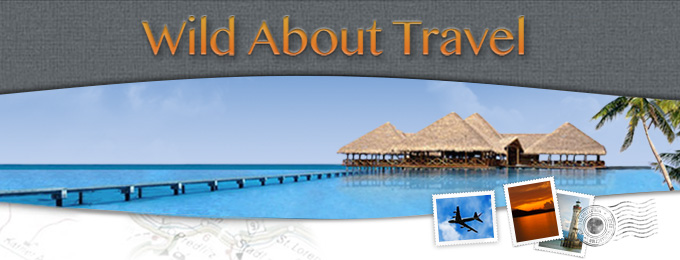
Leave a Reply